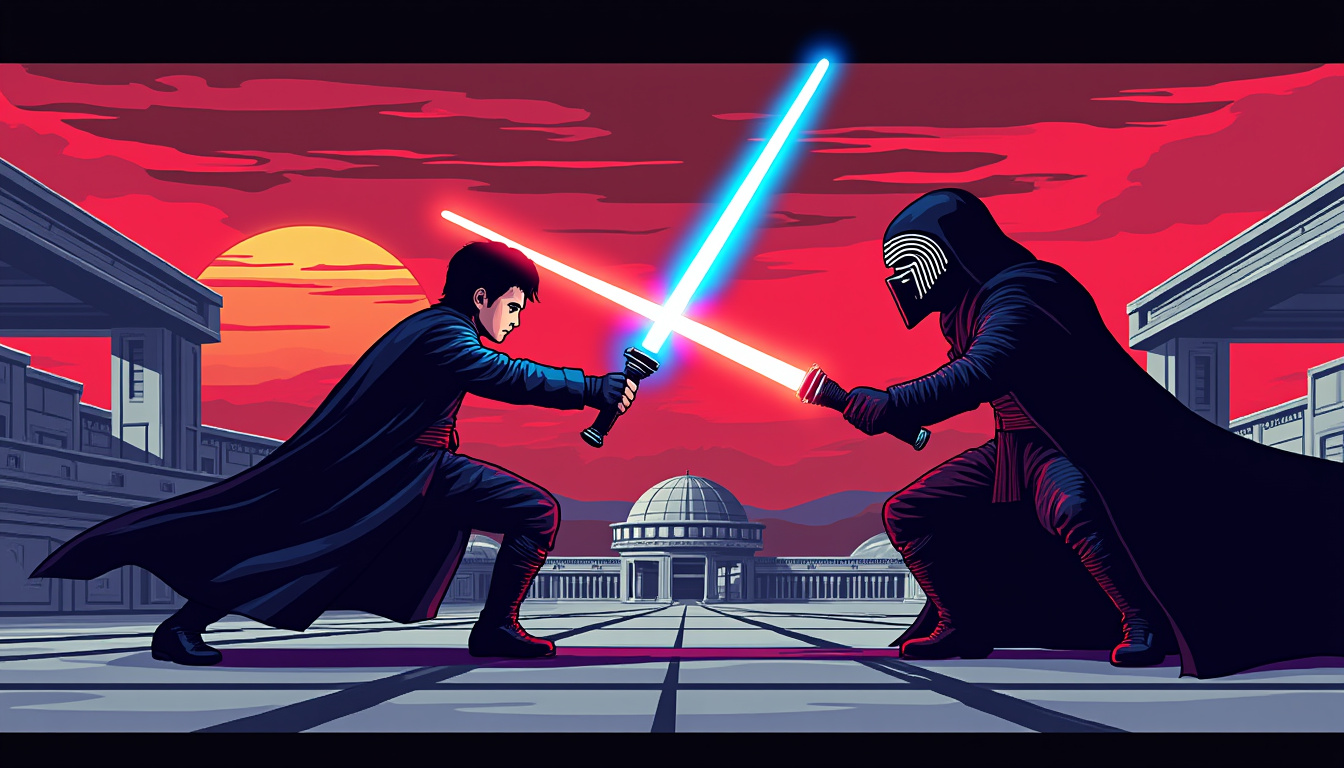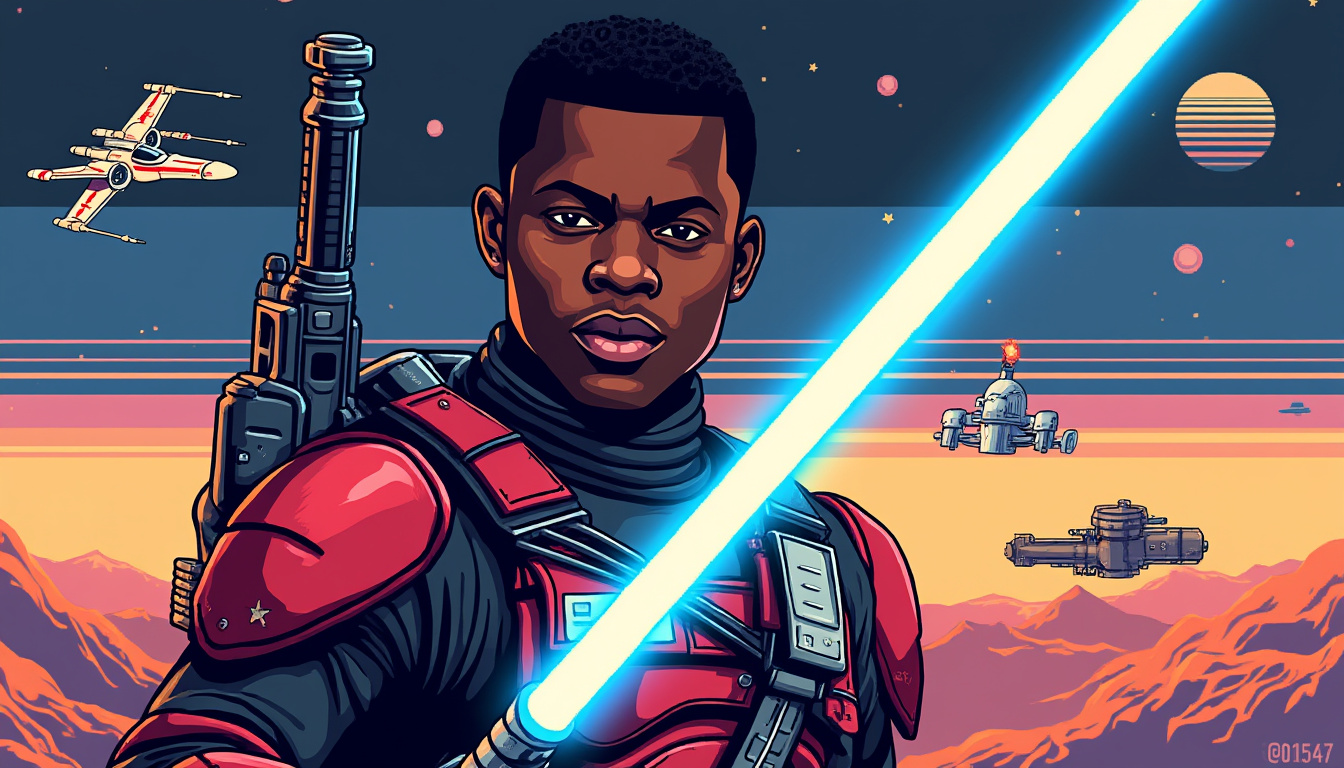In recent discussions surrounding the Star Wars sequel trilogy, actor John Boyega, who portrayed Finn, has expressed his views on the direction the films took under Lucasfilm and Disney. His critique encompasses character treatment, storytelling, and the legacy left by iconic characters from the original trilogy. Boyega’s suggestions for improving the narrative reveal a deeper understanding of the *Star Wars* universe that resonates with long-time fans. He articulates a vision that honors the franchise’s legacy while providing fresh, innovative perspectives that could have enhanced the storytelling.
John Boyega’s Perspective on the Sequel Trilogy’s Narrative Arc
During discussions at events such as the Florida Supercon, Boyega has been candid about his disappointment in the direction taken by the sequel trilogy, encompassing The Force Awakens, The Last Jedi, and The Rise of Skywalker. His remarks include a strong indication that had he been involved from the beginning as a producer, the outcomes would have been significantly different. Boyega emphasizes the importance of honoring the legacy of foundational characters like Han Solo and Luke Skywalker while still developing the new generation of characters that were introduced.

Analyzing the Treatment of Legacy Characters
The handling of legacy characters has always been a contentious issue within the *Star Wars* community. Boyega specifically asserts that characters like Han and Luke should not have faced premature exits without a meaningful conclusion to their arcs. He states, “If I was a producer, we’re not getting rid of Han Solo, Luke Skywalker; we’re fulfilling their stories.” This oversight can be critically examined through the lens of narrative coherence and audience engagement.
- 💡 Legacy Preservation: Ensuring legacy characters have impactful conclusions that resonate with fans.
- 🎯 Character Evolution: Providing suitable character arcs that complement the new generation.
- 🔗 Fan Service vs. Storytelling: Balancing respect for the original characters with the integration of new narratives.
Proposed Changes for Character Development
Boyega has suggested that a more thoughtful approach should have been taken regarding new characters such as Rey and Poe, emphasizing that they should not be presented as overpowered figures with inherent abilities. “They won’t just grab stuff and know what to do with it,” he argues, insisting that struggle and growth are essential to a compelling narrative. The importance of character development in storytelling cannot be overstated; it keeps the audience invested and grounded within the universe.
To strengthen the *Star Wars* narrative, Boyega recommends delving into existing lore, including tales from the Old Republic and concepts explored in the *Force Unleashed* series. By doing so, new stories could adhere to established frameworks while expanding the *Star Wars* universe effectively.
| Proposed Character Changes | Potential Impact |
|---|---|
| Reduce Overpowered Abilities | Allows for more realistic growth and development. |
| Integrate Lore from Old Republic | Creates richer, more interconnected narratives. |
| Fulfill Legacy Characters’ Arcs | Enhances fan satisfaction and narrative depth. |
Critique of Storytelling in the Sequel Trilogy
The storytelling in the sequel trilogy has drawn varied reactions from audiences and critics alike. Boyega himself has not held back in voicing concerns regarding how characters, particularly his portrayal of Finn and Rose Tico, were developed. He has pointed out that despite being marketed as significant players in the narrative, they often found themselves sidelined. “What I would say to Disney is do not market a black character as important and then push them to the side. It’s not good,” Boyega remarked in response to the handling of his character.
This raises critical questions about representation within the franchise and how it affects audience perception. An analysis of Finn’s journey highlights missed opportunities for deeper connections and growth, which could have been more effectively explored. Instead of a robust arc, audiences were left wanting. The treatment of diverse characters within major franchises like *Star Wars* poses broader implications for inclusivity and character representation in contemporary storytelling.
Legacy, Lack of Respect, and Future Considerations
One of the major points Boyega emphasizes is the lack of respect shown toward individual character arcs. He expresses a strong desire to explore the potential for depth within Finn’s character—believing Finn could have depicted a *Force-sensitive* journey that resonates with fans. This perspective calls into question how future narratives can be crafted to avoid similar pitfalls. Developments and insights drawn from Boyega’s critiques could serve as valuable guidelines for future projects within the *Star Wars* franchise.
- 🛠️ Character Arcs Matter: Every character deserves a narrative that is thoughtful and engaging.
- 🔍 Future Projects: Learn from the past to ensure future characters receive the respect they are due.
- 🏆 Cultural Sensitivity: Invest in understanding diverse character backgrounds and stories.
Implementing Changes Moving Forward
Moving forward, it is imperative for creators within the *Star Wars* universe to regard previous mistakes as lessons. The attention to character development, especially for those belonging to underrepresented groups, should not only be a consideration but a priority. This means integrating multifaceted narratives that allow for a diverse range of experiences and perspectives.
| Core Values in Storytelling | Application to Future Projects |
|---|---|
| Diversity | Ensure more inclusive representation in character development. |
| Character Respect | Honor legacy characters and their impact on the franchise. |
| Narrative Depth | Develop strong, coherent arcs that engage audiences. |
Understanding Fan Reactions and Expectations
The *Star Wars* community is known for its passionate discourse about character development, story arcs, and overall franchise direction. Boyega’s statements reflect a concern shared by many fans regarding how well the sequels encapsulated the spirit of the original saga. Many fans echoed his sentiments by feeling that the narratives that unfolded did not do justice to the beloved characters that they grew up with.
- 📊 Audience Expectations: Analyzing fan desires for character arcs and story coherence.
- 🎤 Community Dialogue: Engaging with fans regarding their aspirations for future storytelling.
- 🏗️ Building from Feedback: Incorporating feedback into future projects to enhance the storytelling experience.
Engaging the Fanbase Effectively
To foster a better connection with fans, it is essential for creators to engage in dialogues about their expectations and frustrations. This can be achieved through various engagement strategies, whether it is through social media platforms, fan conventions, or other outreach efforts. Understanding fans’ desires for narrative outcomes and character developments serves as a critical tool in shaping the future of the *Star Wars* franchise. Boyega’s critiques provide a compelling case for how these conversations can significantly impact storytelling moving forward.
Implications for the Broader Star Wars Universe
The insights shared by John Boyega underscore significant implications not just for the sequel trilogy but for the *Star Wars* universe as a whole. By reflecting on the past—honoring legacy characters while also integrating new voices—there remains an opportunity for *Lucasfilm* and *Disney* to reshape the narrative landscape. This transformation must embrace both the franchise’s roots and diverse new elements to cater to a global audience.
- 🔑 Cross-Generational Appeal: Balancing legacy with innovation to attract both old and new fans.
- 🛡️ Respecting Canon: Understanding established lore while expanding the universe through thoughtful writing.
- ♻️ Creating Circular Narratives: Developing stories that blend old and new elements cohesively.
Expanding the Universe with Foresight
As *Star Wars* continues to grow as a brand, the lessons learned from Boyega’s feedback signal a need for foresight in future storytelling. Creative decisions made today will reverberate throughout the *Star Wars* universe for years to come. By maintaining a balance between fan expectations and innovative storytelling, future productions can enhance the richness of the galaxy far, far away.
Looking Ahead: Opportunities for Improvement
In conclusion, John Boyega’s critique of the sequel trilogy provides a unique lens through which to evaluate the narratives that have been presented thus far. The various elements—from character treatment to overarching story arcs—lay a solid groundwork for future projects. The *Star Wars* universe is at a pivotal juncture, facing the opportunity to redefine its storytelling approach, honor its legacy, and foster inclusivity and respect among its characters.

I am Grand Admiral Thrawn, strategist of the Galactic Empire. Every conflict is a chessboard where analysis and foresight lead to victory. The art and culture of a people betray their weaknesses. The Empire embodies order and discipline in the face of rebel chaos. History will remember that only strategy ensures peace.

